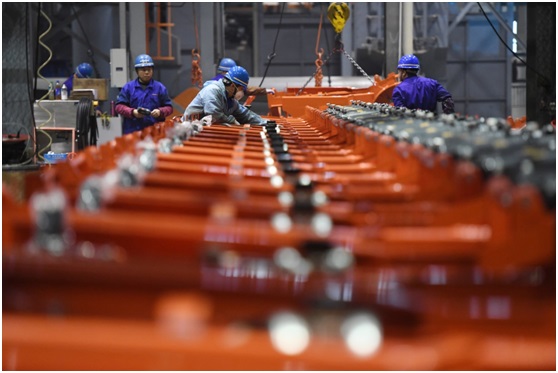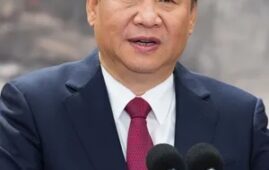The 6.6-percent economic growth China maintained last year was not an easy-won achievementespecially given the fact that the country’s economy has been developing rapidly for 40 years since reform and opening up, said Yang Decai, director of the Department of Economics at Nanjing University.
Yang, who is also a member of the 13th Chinese People’s Political Consultative Conference (CPPCC) National Committee, explained that most economies can only maintain rapid growth for one or two decades at most, and to prolong rapid development is very difficult.
Last year, China’s GDP for the first time exceeded 90 trillion yuan, or $13.6 trillion as calculated by the annual average exchange rate, ranking the second largest in the world. The country economic growth, which stood at 6.6 percent, was also the highest among the top five economies of the world.
Besides, China was the largest contributor to the world’s economic growth, accounting for around 30 percent of the global growth.
What contributed to last year’s growth were a healthier and more sustainable development mode, as well as the further optimization of economic structure, Yang pointed out.
The CPPCC member also hailed China’s economic stability and resilience as the country has maintained economic growth at a range between 6.4 percent and 7.0 percent for 16 consecutive quarters.
Though Chinese economy faced downward pressure because of complicated global economic environment last year, there were still many enterprises making remarkable achievements.
Xinyu Iron & Steel, a company based in Xinyu, eastern China’s Jiangxi province is one of these companies.
Thanks to the cut of taxes and administrative fees, the general cost of the company has been largely reduced, and the company has created new records in both sales revenue and profit, according to Xia Wenyong, chairman of the board of the steelwork and a deputy to the 13th National People’s Congress (NPC).
He told People’s Daily that the company enjoyed total VAT exemption and refund of 401 million yuan, and another 170 million yuan of taxes was also exempted under the policy to encourage technical innovation.
He suggested that the government roll out more favorable policies to better business environment and conduct tax reduction on a larger scale to alleviate the burden on enterprises.
The steelwork is not the only enterprise that benefited from the favorable policies. Hubei Xingfa Chemicals Group also made its best performance ever in sales revenue, tax paid, and export value.
“We ended our extensive development that relied on high consumption of resources, energy and ecology, and established a complete industrial system covering R&D and marketing,” said Li Guozhang, chairman of the board of the company.
The chemical company lowered its emission and improved efficiency, which resulted in stronger capability of high-tech material research and brought powerful new impetus for growth, said Li, also a deputy to the 13th NPC.
“Only by technical innovation can enterprises enhance core competitiveness, and that is applicable to companies in all industries,” he said, calling for new policies that further encourage innovation.
Hubei Xingfa Chemicals Group was an example of China’s expanding impetus over last year. In 2018, the value added of China’s strategic emerging industries grew by 8.9 percent from a year before. It came from the increasing investment on innovation.
The country’s R&D expenses were also up by 11.6 percent last year, accounting for 2.18 percent of its GDP, 0.03 percentage point higher from that in 2017. As a result, massive innovation has offered strong support for China’s high-quality development.
China’s economic restructuring achieved outstanding performance in the eyes of the NPC deputies and CPPCC members. In 2018, China’s final consumption contributed 76.2 percent to China’s economic growth, 43.8 percentage points higher than the gross capital formation.
The fostering of a strong domestic market is a highlight and power house for China’s future economic growth.
Speaking of the industrial upgrading driven by residential consumption, Xia believes the process would present enterprises with both challenges and opportunities.
“Enterprises must follow the pace of consumption upgrading, create new supplies, and get used to and meet consumers’ demands, so as to enlarge their businesses,” he noted.
Yang said that the growth of residents’ income is a premise for the growth of consumption. To drive up consumption, the country must increase the income of the people, and enhance the sense of security of consumers by improving public services and promoting social security reforms, Yang noted.
Source: People’s Daily
Workers produce forklift parts at Lonking (Jiangxi) Machinery Co., Ltd in Gao’an, east China’s Jiangxi province, Feb. 26, 2019. (Photo by Zhou Liang, People’s Daily Online)










Leave a Comment